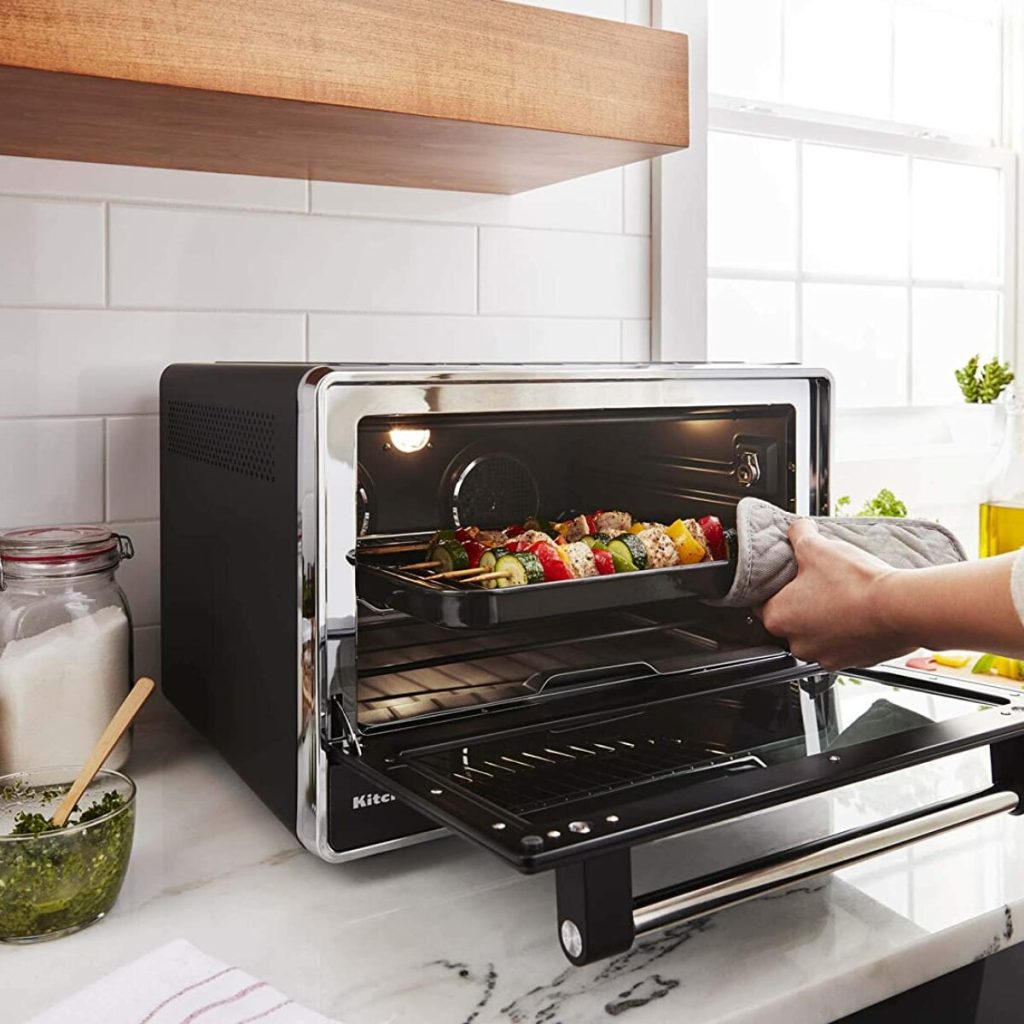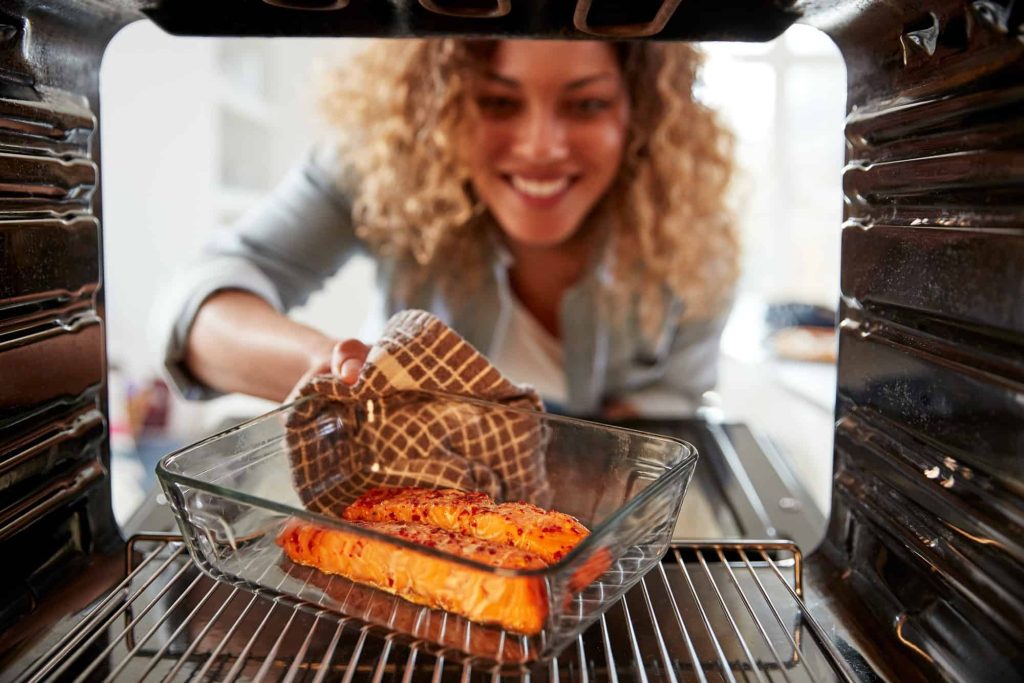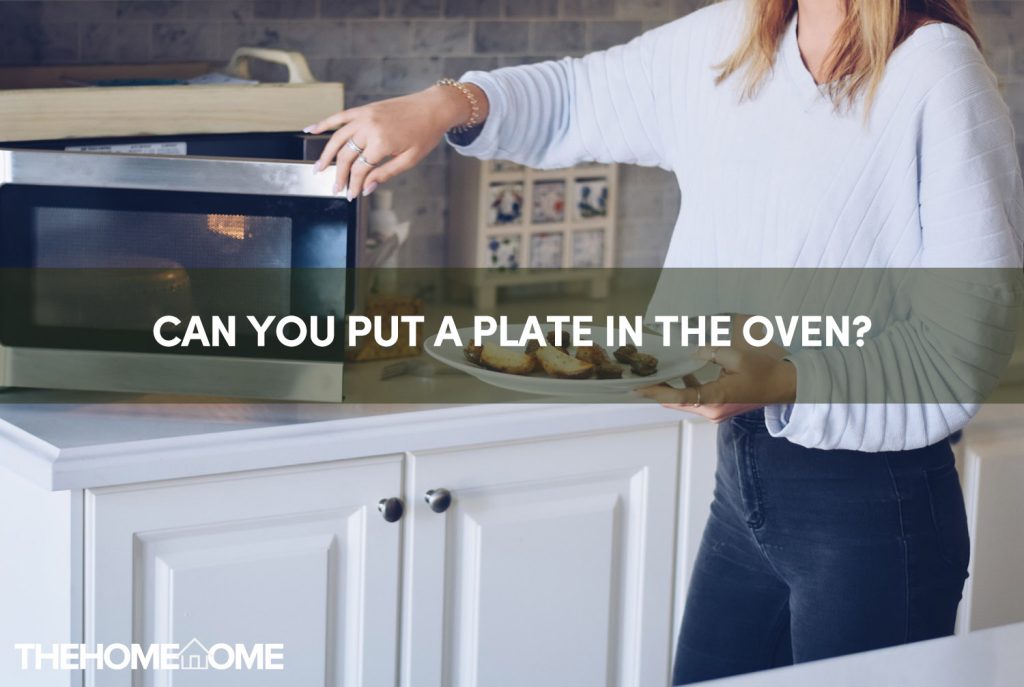Ever wondered if you can put a plate in the oven? If for example, your microwave got bad or faulty, utilizing the oven to heat your food is naturally the next option that comes to mind as the oven is well known for producing heat.
Nonetheless, it is expected that you will be doubtful as to whether it is safe to put a plate in the oven or not.
Yes, you can put your plate in the oven as it is a great alternative for warming food for a short period. However, it is of relevance to ensure that the kind of plate being used is tagged oven safe before exposing it to such heat. Ceramic, tempered glass, metal, and cast iron plates are popular materials that can go into the oven without causing any issues.
It might interest you to know that using plates not labeled as oven-safe in the oven can result in mishappenings as the plate could either crack, break or melt as the case may be.
For better understanding, this article will give an in-depth and comprehensive guide to help navigate through the different types of plates that are oven-safe and also give insights on plates that are not compatible for oven use as well. So let’s just dive right into it.
Can You Put A Plate In The Oven?
Most times when the microwave isn’t available, reheating your food on the stovetop can be a bit strenuous, you’d rather prefer to put the food directly on a plate and warm them in an oven to avoid the stress of having to wash any more dishes.
Plates can go in the oven on one condition, it has to be strong enough to withstand high temperatures. These kinds of plates are usually referred to as oven-safe plates as there will be no problems whatsoever attached to them being used in the oven.
The following are the types of oven-safe plates suitable for use;
1. Glass plates
Although it can be a tad tricky using glassware in the oven, they are mostly safe for use. Additional caution must be taken as there’s a limit to how much heat glass can take. If there is a sudden change in temperature or by mistake the heat exceeds the temperature the glass can withstand it could go into thermal shock.

Thermal shock causes the glass plate to crack or explode. This is why it’s best to make use of tempered glasses like Corningware and pyrex glasses, which can take temperatures as high as 350 degrees Fahrenheit.
But as for other brands of glass plates, always check the bottom of the plate for an oven-safe symbol.
2. Ceramic Plates
Clay, powders, water, and earthen components are the elements used to compose ceramic plates. This makes them pretty heavy and capable of withstanding the high temperature in an oven impressively.
But if your ceramic plate was designed after it was flamed, the paint might chip off when you subject it to heat in the oven. Ceramic can get very hot so it’s key to take precautions when taking it out of the oven. Irrespective of these downsides and also the possibility of it going through thermal shock, ceramic is suitable for use in the oven.
3. Metal plates
Metal is not as common as other types of plates, but it’s very useful for oven use. Stainless steel plates or enameled stainless steel plates are metals painted with hard enamel.
Metal plates are much better because they are not subjected to thermal shock, however, extremely high temperatures can cause them to be red hot. Always ensure to take safety precautions by using hot pads when taking out metal plates from the oven.
4. Cast-Iron
Cast iron is almost similar to metal plates but quite heavier and more dependable iron. Being careful not to drop it whilst putting it into the oven and taking it out is vital. And more importantly, use hot pads to safeguard your hands when handling it as cast iron can retain more heat than the other kinds of the plate, so expect it to be extremely hot.
Plates That Shouldn’t Go In The Oven
Some of these plates are quite obvious that they shouldn’t be in the oven but a few of them are not. Let’s discuss the types of plates you shouldn’t attempt to put in your oven.

1. Plastic
Plastic will always melt in the oven. Although some plastic resins can withstand high temperatures, they’re not commonly found. Additionally, a melting plastic in your oven is bad for you and your oven as it is capable of releasing harmful fumes that could be terrible for your lungs.
It could also create a horrendous mess in the oven or damage your appliance and in a worst-case scenario start a fire. Avoid using a plastic plate in the oven at all costs.
2. Wooden plates
Surprised to find this on the list? Wooden plates should not be put in the oven, as they could burn or catch fire. Although some wooden plates have been treated specially and coated with enamel I would not still advise that they are safe for use in the oven. We do not want to start a fire now, do we?
3. Styrofoam plates
Styrofoam plates are closely related to plastic although it is not as strong, it also melts and releases toxic fumes into your food.
They are best used for keeping food cold and they are quite inexpensive. However, it easily melts at high temperatures. Do not attempt to use them in the oven.
Frequently Asked Questions
Can Corningware plates go in the oven?
Can you put aluminum foil plates in the oven?
Can all plates go in the oven?
Is it safe to put paper plates in the oven?
Conclusion
Plates can conveniently go into the oven but note that not every type of plate should be kept in a heated oven. Plates like ceramic, glass, metal and iron cast plates are oven safe. However, caution is still advised when utilizing these plates.
Also, check the bottom of the plate for the oven-safe symbol to be rest assured that it is completely safe.
On the other hand, plastics, styrofoam, and wooden plates have no business in the oven as there will be repercussions. A fire could break out as a result of melting plastic or styrofoam or a burning wooden plate, it could also damage your appliance.
Harmful fumes can leach into the food which could cause health complications. It is very essential to use the right plates in the oven to avoid these mishappenings.
